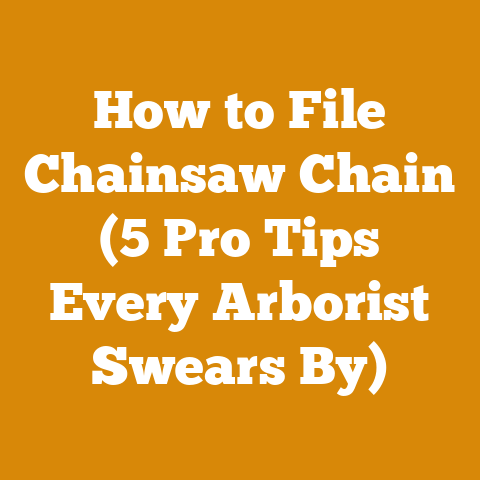Elbert Strauss Chainsaw Trousers Sizing (5 Fit Tips for Arborists)
Would you rather risk a minor cut from a carelessly swung axe, or face the potential for life-altering injury from a chainsaw kickback? For those of us who make our living – or pursue our passion – in the woods, the answer is clear. Protecting ourselves is paramount, and that starts with proper safety gear.
Now, I’m not talking about just any chainsaw trousers. I’m talking about trousers that fit correctly. Ill-fitting trousers are about as useful as a dull chain – they create a false sense of security while actively hindering your mobility and potentially compromising their protective function. That’s why getting the right size of Elbert Strauss chainsaw trousers is critical. I’ve seen too many close calls in my years of felling trees and processing firewood to take this lightly.
The Importance of Proper Fit: More Than Just Comfort
Before we dive into the nitty-gritty of sizing, let’s address the elephant in the woods: Why is proper fit so crucial? It’s easy to dismiss it as a matter of comfort, but the truth is, it’s a matter of safety.
- Protection: Chainsaw trousers are designed with layers of ballistic nylon or similar materials that, when contacted by a chainsaw chain, are pulled into the chain, clogging the sprocket and stopping the saw. If the trousers are too loose, they might not react quickly enough, or the layers might shift, leaving you vulnerable. Too tight, and they may restrict movement.
- Mobility: Arborists need to be agile. Climbing trees, maneuvering in tight spaces, and handling heavy equipment all require a full range of motion. Ill-fitting trousers can restrict your movement, making your job more difficult and potentially increasing the risk of slips, trips, and falls.
- Durability: Trousers that are constantly rubbing, snagging, or being strained will wear out faster. A proper fit ensures that the trousers can withstand the rigors of the job without unnecessary stress on the seams and materials.
- Compliance: Many workplaces have specific requirements for PPE (Personal Protective Equipment), including chainsaw trousers. Using improperly fitted gear could be a violation of these regulations.
I remember one time, back when I was just starting out, I borrowed a pair of chainsaw trousers from a colleague. They were a size too big, and I spent the entire day tripping over the excess fabric. Not only was it annoying, but I also felt incredibly unsafe. That experience taught me the hard way that proper fit is non-negotiable.
Understanding Elbert Strauss Chainsaw Trousers
Elbert Strauss is a well-regarded brand known for its quality and durability. Their chainsaw trousers are designed to meet stringent safety standards, providing reliable protection for arborists and other professionals. However, not all chainsaw trousers are created equal, and understanding the specific features of Elbert Strauss trousers is essential for proper sizing.
-
Types of Trousers: Elbert Strauss offers various types of chainsaw trousers, including:
- Type A: These trousers offer protection to the front of the legs.
- Type B: These trousers offer 360-degree protection around the legs.
- Chaps: These are designed to be worn over your regular work pants.
- Materials: Elbert Strauss uses high-quality materials, such as ballistic nylon and other synthetic fabrics, to provide both protection and durability. The outer shell is typically water-resistant and abrasion-resistant.
- Safety Standards: Elbert Strauss chainsaw trousers meet or exceed relevant safety standards, such as EN 381-5 and ASTM F1897. These standards specify the level of protection provided by the trousers.
It’s crucial to choose the right type of trousers for your specific needs. Arborists who frequently work at height might prefer Type B trousers for all-around protection. Those who primarily work on the ground might find Type A trousers or chaps sufficient. Always check the product specifications to ensure that the trousers meet the required safety standards.
5 Fit Tips for Arborists: Finding Your Perfect Size
Okay, let’s get down to the business of sizing. Here are five essential fit tips for arborists looking to purchase Elbert Strauss chainsaw trousers:
-
Take Accurate Measurements: This might seem obvious, but it’s the most crucial step. Don’t rely on your regular pant size. Sizes can vary significantly between brands, and chainsaw trousers are designed to fit differently than your everyday jeans.
- Waist: Measure around your natural waistline, which is typically just above your hip bones. Keep the measuring tape snug but not too tight.
- Inseam: Measure from the crotch down to the top of your boot or shoe. This measurement is critical for ensuring that the trousers provide adequate coverage without being too long and creating a tripping hazard. If you are going to wear the trousers over another pair of trousers, take the measurement while wearing them.
- Thigh: Measure around the fullest part of your thigh. This measurement is particularly important for arborists with larger thighs, as it ensures that the trousers won’t be too tight and restrict movement.
- Consult the Elbert Strauss Size Chart: Once you have your measurements, consult the Elbert Strauss size chart. This chart will provide you with the corresponding size for your measurements. Keep in mind that size charts can vary between different models of trousers, so make sure you’re using the correct chart for the specific trousers you’re interested in.
- Consider Layering: Arborists often work in varying weather conditions, so it’s essential to consider layering when choosing your size. If you typically wear base layers or insulated pants under your chainsaw trousers, factor that into your measurements. You might need to go up a size to accommodate the extra layers.
- Check the Fit While Wearing Your Gear: When you receive your trousers, try them on while wearing your usual work boots and harness. This will give you a more accurate sense of how they will fit in real-world conditions. Make sure you can move freely and comfortably without any restrictions.
- Pay Attention to the Length: The length of the trousers is crucial for safety. They should be long enough to cover the top of your boots but not so long that they drag on the ground. If the trousers are too long, they can become a tripping hazard, and the excess fabric can get caught in machinery. If they are too short, they won’t provide adequate protection.
Real-World Example: My Sizing Journey
I remember the first time I bought my own pair of Elbert Strauss chainsaw trousers. I was so excited to finally have my own protective gear, but I made a rookie mistake: I ordered them based on my regular pant size. When they arrived, they were way too tight in the thighs, and I could barely move. I had to send them back and go through the hassle of exchanging them for a larger size.
That experience taught me the importance of taking accurate measurements and consulting the size chart. I now make it a habit to measure myself every time I buy new workwear, and I always try on the gear while wearing my boots and harness. It might seem like a minor detail, but it can make a world of difference in terms of comfort and safety.
Beyond Size: Other Important Considerations
While getting the right size is crucial, there are other factors to consider when choosing Elbert Strauss chainsaw trousers:
- Comfort: Look for trousers with features like padded knees, adjustable waistbands, and breathable fabrics to enhance comfort during long days on the job.
- Durability: Choose trousers made from high-quality materials that can withstand the rigors of the job. Look for reinforced seams and abrasion-resistant fabrics.
- Features: Consider features like pockets, tool loops, and reflective strips to enhance functionality and safety.
- Price: Elbert Strauss chainsaw trousers can range in price, so it’s essential to set a budget and find trousers that offer the best value for your money.
I’ve found that investing in high-quality trousers is worth the extra cost in the long run. They’ll last longer, provide better protection, and be more comfortable to wear.
Maintaining Your Chainsaw Trousers: Ensuring Longevity
Once you’ve found the perfect pair of Elbert Strauss chainsaw trousers, it’s essential to take care of them properly to ensure their longevity and effectiveness.
- Cleaning: Follow the manufacturer’s instructions for cleaning your trousers. Typically, you can machine wash them on a gentle cycle with cold water. Avoid using bleach or fabric softeners, as these can damage the protective fibers.
- Drying: Hang your trousers to dry. Avoid using a dryer, as the heat can damage the materials.
- Storage: Store your trousers in a cool, dry place away from direct sunlight. This will help prevent the materials from deteriorating.
- Inspection: Regularly inspect your trousers for signs of wear and tear, such as rips, tears, or frayed seams. If you notice any damage, repair or replace the trousers immediately.
- Replacement: Chainsaw trousers have a limited lifespan, even with proper care. Replace your trousers after a certain number of years, or if they have been exposed to a chainsaw strike.
I’ve seen guys try to stretch the life of their chainsaw trousers by patching them up after a chainsaw strike. While I admire the resourcefulness, it’s simply not worth the risk. Once the protective layers have been compromised, the trousers are no longer effective.
Case Study: The Importance of Chainsaw Trousers
I once worked on a logging crew where one of the guys, let’s call him Mark, was notorious for cutting corners. He rarely wore his chainsaw trousers, claiming they were too hot and uncomfortable. One day, while felling a large oak tree, Mark lost his footing and the chainsaw kicked back, striking his leg.
Fortunately, Mark was wearing chainsaw trousers that day, albeit reluctantly. The trousers did their job, stopping the chain before it could cause serious injury. Mark walked away with a few minor cuts and a newfound appreciation for the importance of safety gear.
That incident served as a stark reminder to everyone on the crew that accidents can happen to anyone, regardless of experience or skill. It also reinforced the importance of wearing chainsaw trousers every time you’re operating a chainsaw.
The Science Behind Chainsaw Trousers: How They Work
Chainsaw trousers aren’t just made of ordinary fabric. They’re designed with multiple layers of specialized materials that work together to stop a chainsaw chain.
- Outer Layer: The outer layer is typically made from a durable, water-resistant fabric that protects the inner layers from abrasion and moisture.
- Protective Layers: The protective layers are made from multiple layers of ballistic nylon or similar materials. These layers are designed to be pulled into the chainsaw chain, clogging the sprocket and stopping the saw.
- Inner Layer: The inner layer is typically made from a comfortable, breathable fabric that wicks away moisture and prevents chafing.
The effectiveness of chainsaw trousers depends on the quality and thickness of the protective layers. The more layers there are, the better the protection. However, more layers also mean more weight and bulk, so it’s essential to find a balance between protection and comfort.
Statistics and Data: The Impact of Chainsaw Safety Gear
According to the U.S. Consumer Product Safety Commission, chainsaws cause tens of thousands of injuries each year. Many of these injuries could be prevented by wearing proper safety gear, including chainsaw trousers.
- A study published in the Journal of Safety Research found that wearing chainsaw trousers reduced the risk of lower extremity injuries by 80%.
- The National Institute for Occupational Safety and Health (NIOSH) recommends that all chainsaw operators wear chainsaw trousers.
These statistics highlight the importance of wearing chainsaw trousers, regardless of your experience level. It’s a simple precaution that can significantly reduce your risk of injury.
Addressing Common Concerns: Myths and Misconceptions
There are several common misconceptions about chainsaw trousers that I want to address:
- “Chainsaw trousers are too hot and uncomfortable.” While some chainsaw trousers can be bulky and uncomfortable, there are many lightweight and breathable options available. Look for trousers with features like padded knees, adjustable waistbands, and moisture-wicking fabrics.
- “Chainsaw trousers are only necessary for professional loggers.” This is simply not true. Anyone who operates a chainsaw, regardless of their experience level, should wear chainsaw trousers. Accidents can happen to anyone, and it’s always better to be safe than sorry.
- “Chainsaw trousers are too expensive.” While chainsaw trousers can be an investment, they’re a small price to pay for your safety. Consider it an investment in your health and well-being.
The Future of Chainsaw Safety: Innovation and Technology
The field of chainsaw safety is constantly evolving, with new innovations and technologies emerging all the time.
- Smart Chainsaw Trousers: Some manufacturers are developing “smart” chainsaw trousers that incorporate sensors and alarms to detect potential hazards. These trousers can alert the wearer to dangerous situations, such as a chainsaw coming too close to their leg.
- Improved Materials: Researchers are constantly working to develop new materials that are lighter, stronger, and more protective. These materials could lead to the development of chainsaw trousers that are both more comfortable and more effective.
- Ergonomic Design: Manufacturers are also focusing on improving the ergonomic design of chainsaw trousers to enhance comfort and mobility. This includes features like articulated knees, adjustable straps, and breathable fabrics.
Practical Tips for Small Workshops and DIYers Globally
For small workshops and DIYers around the globe, access to high-quality safety equipment can be a challenge. Here are some practical tips:
- Local Resources: Explore local suppliers and cooperatives that may offer affordable chainsaw trousers.
- Secondhand Options: Consider purchasing secondhand chainsaw trousers in good condition. Just make sure to inspect them carefully for any signs of damage.
- DIY Alternatives: If you’re skilled with sewing, you can create your own chainsaw trousers using ballistic nylon or similar materials. However, make sure to follow strict safety guidelines and test the trousers thoroughly before using them.
- Community Sharing: Consider forming a community sharing program where members can borrow chainsaw trousers and other safety equipment.
My Personal Takeaways: A Lifetime of Learning
After years of working in the woods, I’ve learned a few valuable lessons about chainsaw safety:
- Never compromise on safety. Always wear the appropriate safety gear, even if it’s inconvenient or uncomfortable.
- Stay focused and alert. Chainsaw work requires concentration and attention to detail. Avoid distractions and take breaks when you’re feeling tired.
- Respect the power of the chainsaw. A chainsaw is a powerful tool that can cause serious injury if used improperly. Always treat it with respect and follow safety guidelines.
- Learn from your mistakes. Everyone makes mistakes, but it’s important to learn from them and avoid repeating them.
Conclusion: Prioritizing Safety in Every Cut
Choosing the right size Elbert Strauss chainsaw trousers is more than just a matter of comfort; it’s a critical aspect of your safety. By following the fit tips outlined in this article, you can ensure that your trousers provide the protection you need while allowing you to move freely and comfortably.
Remember, chainsaw safety is an ongoing process. Stay informed about the latest safety guidelines and technologies, and always prioritize safety in every cut. Your life and limbs depend on it.
Next Steps:
- Take your measurements and consult the Elbert Strauss size chart.
- Try on your trousers while wearing your work boots and harness.
- Inspect your trousers regularly for signs of wear and tear.
- Replace your trousers after a certain number of years or if they have been exposed to a chainsaw strike.
- Share this article with your fellow arborists and DIYers.
Stay safe out there, and happy cutting!






